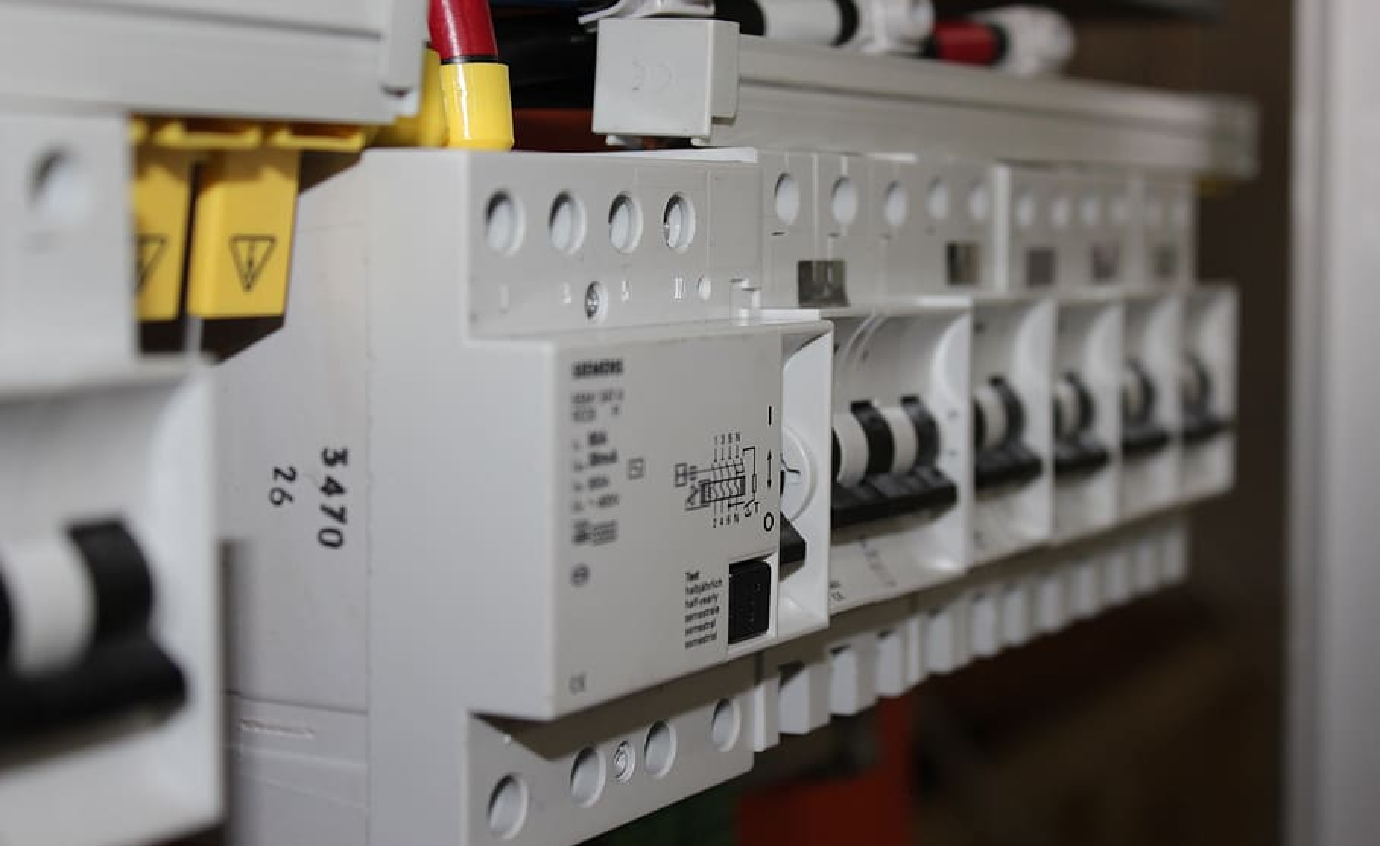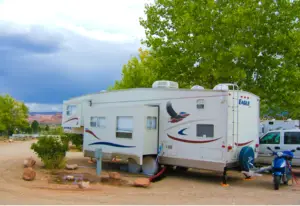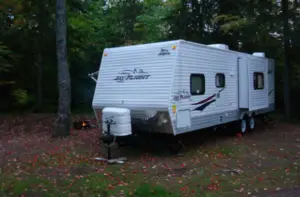The electrical system onboard an RV is something very important to familiarize yourself with. If you are not mechanically inclined, it might seem to be a daunting task.
However, if you look at this as one or smaller tasks, it becomes less complicated. When you start your engine, the battery starts the engine and supplies power to all accessories for a limited period.
This means that if any one of these systems fails, then the battery has to do double duty until you can get somewhere safe and turn off the engine.
RV Electrical Problems
Lets see some of the common RV electrical problems and how to fix them.
1. Battery discharge/no crank
This will affect both everyday driving and generator operation. An excellent place to check is at the battery terminals – looking for loose connections or corrosion.
The thing would be loose ground wires from the engine, starter, or alternator. Check for corrosion around battery contacts by using a clean cloth to wipe it clean.
Troubleshooting steps:
If your RV is not cranking when you turn the ignition switch’s key, go to your batteries and check for loose terminals at both the positive and negative leads. Sometimes, a small amount of corrosion can build up inside boots on top of each post which will cause a loose connection – spray with a non-corrosive cleaner/deoxidizer if that is the case.
Also, ensure that cables are tight from the engine block to connect at battery plus and minus.
If cranking seems fine but no power from batteries, look for breakers tripped in the main power distribution center. Check all fuses in the vehicle, especially under the hood and in the back. Faulty circuit breakers will trip if there is too much current draw.
2. Fuse box problems
Open or loose connections at battery terminals can also cause no crank issues. If this is not the case, it could be the fuse block that has tripped a circuit breaker. There are usually two to three sides to these plastic boxes – each side usually handles between 25-30 amps of electrical load (fuse color may indicate amperage).
If you have access to an ohmmeter, you can check for continuity through each fuse by placing one probe on one side of the blade and another on the other side. Or use a test light.
If there is no power through the fuse (opened by tripping) or you suspect corrosion in the blade area (fuse will not make contact even if it looks OK), replace it.
3. Fuses blowing constantly
When fuses are constantly blowing out, several appliances run off the same power circuit, or batteries are low and need charging. Make sure to check that all appliances plugged into one circuit work before checking batteries/charging system.
Check each device individually with an electrical tester for signs of short circuits. The tester should indicate zero ohms resistance between two points – this would mean an open wire which requires replacing the cord or entire device dependent upon where it is located in RV.
If each appliance is running off of its breaker, then you are OK. However, if one or several are sharing a circuit causing them to overload, you will need to reset the appropriate breakers in the fuse box.
If all appliances work individually but not when plugged into the same circuit, check to wire between devices and fuse box – it could have melted insulation at the point where the power cord enters RV.
4. Low batteries
Low voltage issues usually show up with lights dimmer as time goes by while connected to shore power. There are three ways to charge batteries on an RV without using an engine alternator: solar panels, wind turbines, or generators; each has pros and cons. You can use or any combination of these charging sources.
Solar panels are popular since they are easy to set up – hard mounting is not necessary. However, you cannot simply plug them into the cigarette lighter receptacle or regular 120-volt outlets because this will not provide enough power. They need to be wired directly to batteries for best charging results.
Wind turbines are very handy if you camp in places with the big wind but should be used with caution as they can drain your batteries overnight too quickly if left unmonitored.
The size of the turbine should match battery bank capacity (~75 watts per 100 amp hour batteries). Keep at least 20% of battery bank capacity unconnected at any one time so that it can maintain full charge. Using an air conditioner dramatically affects the turbine, so shut off the air conditioner if you need to use much power from batteries.
Generators are best for charging batteries while driving but also have some drawbacks, such as noise and fumes. Avoid using inverters with generators – they can cause high emissions or even injury by blowing fuses when misconnected.
To reduce running time when using a generator, connect one battery in your bank at a time to run devices that do not need much voltage (lights) rather than hooking up all batteries and try starting the engine this way. If possible, add extra banks of deep cycle batteries rather than add more volts (using eight 100 amp-hour 12-volt batteries will provide 2400 watt-hours total).
Your RV might be equipped with its charging system (dual-purpose battery/alternator or separate inverter and battery charger), but from time to time, these need some attention too.
Some have a switch that switches the alternator between charging your house batteries and running your engine. Make sure it is set to charge batteries – if you cannot find this switch, turn off all electrical appliances, including the water pump, microwave oven, etc., start the vehicle and let it run for at least 10 minutes with no load on the engine.
Once the alternator is engaged into a fully charged mode, turn everything back on and allow each appliance to run one by one until they become normal again – this indicates getting rid of parasitic loads which draw down RV’s house batteries over extended periods of nonuse.
If you see an abnormally high amp draw on the breaker panel, that could indicate a blown fuse. If all fuses are OK, check wiring between your RV breakers and appliances to ensure it is not melted insulation.
5. Problem with Switches
Stove switches are typically located near or inside the oven. The microwave oven has two – one for the light bulb and another for fans.
Some appliances might have extra temperature sensors which may be wired in series with thermostat switch. These can be tested by turning the appliance off at the leading PowerPoint, disconnecting the wire from sensor lead (or terminal if using “bullet” terminals), checking resistance across leads with an ohmmeter – should be equivalent to the heating element of the same wattage as the oven will draw several amps at 240 volts.
If resistance is infinite or greater than the heating element, the sensor is faulty and replaced.
6. Appliance connectors
An appliance may have a plug to connect it directly to the leading PowerPoint but has bare wire ends.
The two wires are hot (black) and neutral (white), which need to be appropriately connected according to the schematic – if you cannot find a wiring schematic, check the manual.
Make sure the green ground lead goes to a proper grounding screw on the appliance mounting plate – plastic plugs do not have any electrical connection even though they might look like weatherproof type- always use genuine connectors as open plugs can cause dangerous arcing as well as equipment damage.
7. Grounding conductor
This is another safety issue that is often overlooked. Many RVs come from the factory with a green insulated wire coming from the inverter or some other place in an aluminum “U” shaped clamp.
This clamp should be attached to the grounding screw of the mounting plate on which you intend to install your electric appliance. If no such screw exists, add it by drilling a hole and using appropriate nuts and washers – never connect the ground wire to gas piping or fuel tank as this creates a dangerous situation if there is a short circuit between hot and ground wires.
8. Fuses
It is essential to protect all electrical circuits with properly rated fuses. Inverters have two types of protection built into them- overloads will shut down inverter but allow continuing use of battery charging, should there be any.
Circuit breakers are more sensitive and will trip much sooner, shutting off power completely – make sure you know which type your inverter has and keep spares available at all times.
9. Vacuum cleaner
Some appliances might use heating to dry out wet carpets or vacuum dust from air conditioner coils.
When not in use, always unplug such appliance because if the heating element breaks down, it is likely to short circuit with an open load (part glowing red hot even though no current is flowing through it due to broken wire inside), causing damage to insulation.
As per our earlier discussion, this is precisely what happens in cables that get overheated and eventually either melt or burn- insulation breaks down, and current flows between different wires or equipment.
10. Microwave oven
Most modern appliances have a warning label on the bottom or backside of the cabinet, which lists all essential safety precautions to be adhered to while operating the appliance.
Current flowing through the heating element (which is usually part of microwave oven magnetron ) gets converted into heat when microwaves are generated inside the oven cavity.
Avoid standing in front of the oven with open doors when it is in use, keep children away, never operate empty range unless you like them charred black! Microwave radiation can cause serious health problems (especially for pregnant women who should not even stand close to one).
11. Dishwasher
Rule number one- do not mix metals. Both hot and cold water inlet and discharge hoses are typically made of plastic – do not use metal type because it can cause dangerous galvanic corrosion, resulting in equipment damage. If you have to, make sure all metallic components are isolated with plastic or rubber washers.
12. Refrigerator
Make sure your refrigerator is plugged into a proper receptacle using an appropriate adapter. Suppose you plug it into any household outlet with higher voltage (like a dryer outlet with a four-prong connector, which has 120 volts between non-grounded conductors).
In that case, there is no protection against electrical shock at all! Some RVs also have 110-volt outlets near the kitchen sink, which is again the wrong location for powering the refrigerator – a typical power cord has one prong more comprehensive than the other, so it is easy to tell which wire is “hot” and which one goes to neutral.
13. Air conditioner
Remove all extension cords (except maybe a small one for radio), power cord splitters, and plug-in transformers ( like this small inverter ) because they create dangerous voltage drops, resulting in high temperatures that might damage internal components of the air conditioner.
Do not use any device that claims to boost AC output – it might destroy the compressor. If you want more AC power, replace the existing unit with the bigger model or install a separate roof-mounted air conditioner next to an existing one.
The AC power often fails when voltage exceeds 150 volts at any point in the circuit beyond the inverter/converter input terminals on an RV’s distribution panelboard or disconnect box.
Any fuse or breaker serving this portion of circuitry should be checked for proper operation with an ohmmeter. To check for a shorted-out element in the AC distribution panel, begin at one end of each bus bar and move toward the other end, looking for a fuse that’s blown or a breaker that has tripped.
The smaller the wire gauge you find blown, the more likely it will be a suitable circuit.
14. Microwave ovens
Microwaves are very powerful and should not be underestimated – do not stand in front of an oven with open doors when it is in use.
Children should stay away. Microwaves work by using radio waves that flip water molecules inside food- if you put a metal object into a microwave oven (even aluminum foil), solid electric currents will begin flowing through it, which might damage the oven’s magnetron.
15. Electric cooktops
Like all other appliances with heating elements, an electric range or cooktop must be adequately grounded to prevent shocks.
Never immerse a hot element into the water! If the glass on top breaks, disconnect power immediately and let shards cool down before disposal because the glass on these appliances is exceptionally sharp and dangerous.
This article was created for educational purposes only and should be viewed as a reference. RV-electronics assumes no responsibility for consequences resulting from the use of this material.
Please keep in mind that safety always comes first – if you don’t know what you are doing, have somebody who does show you how to work on your electrical system before attempting any repairs yourself!





